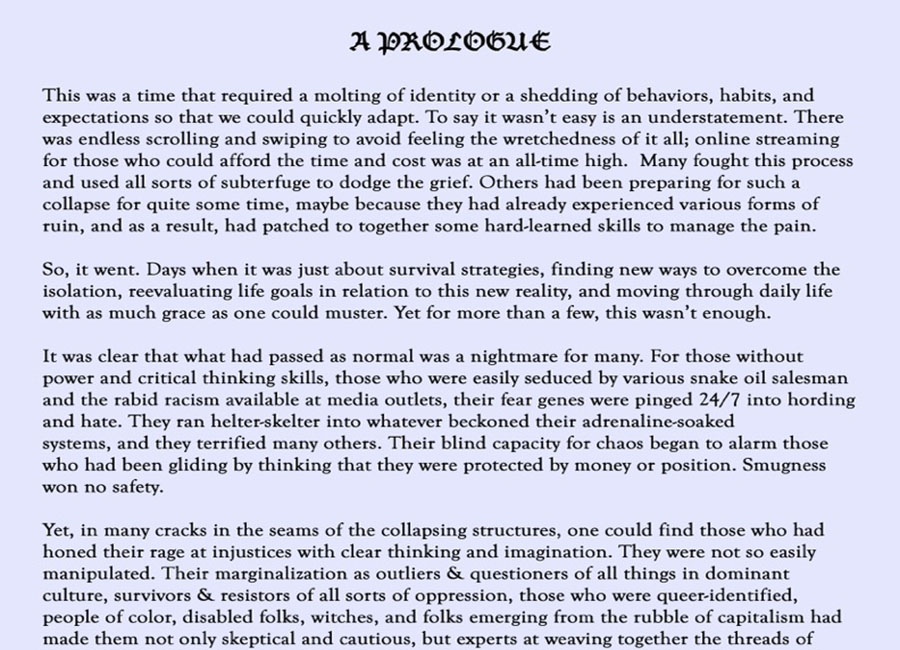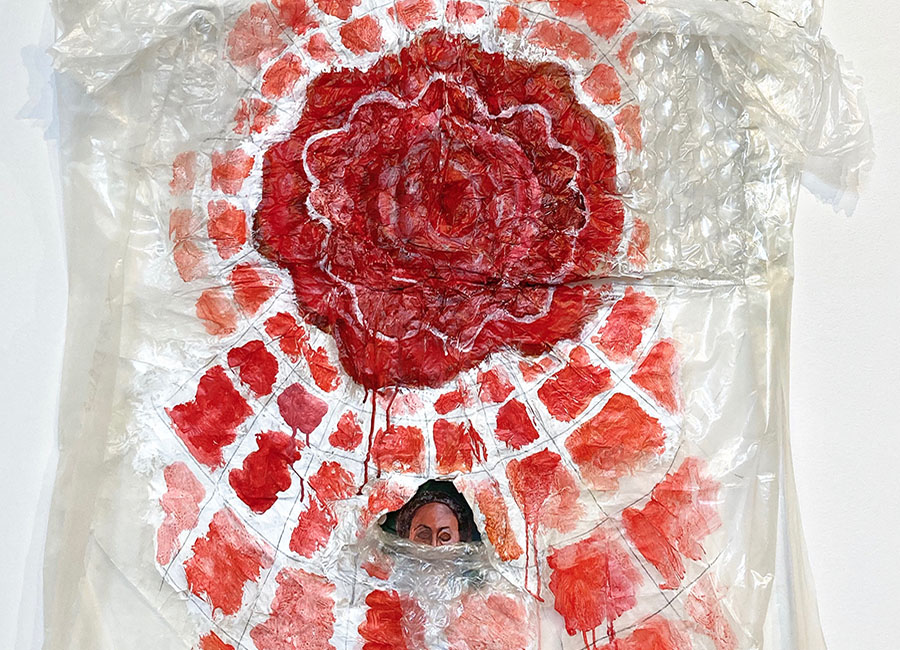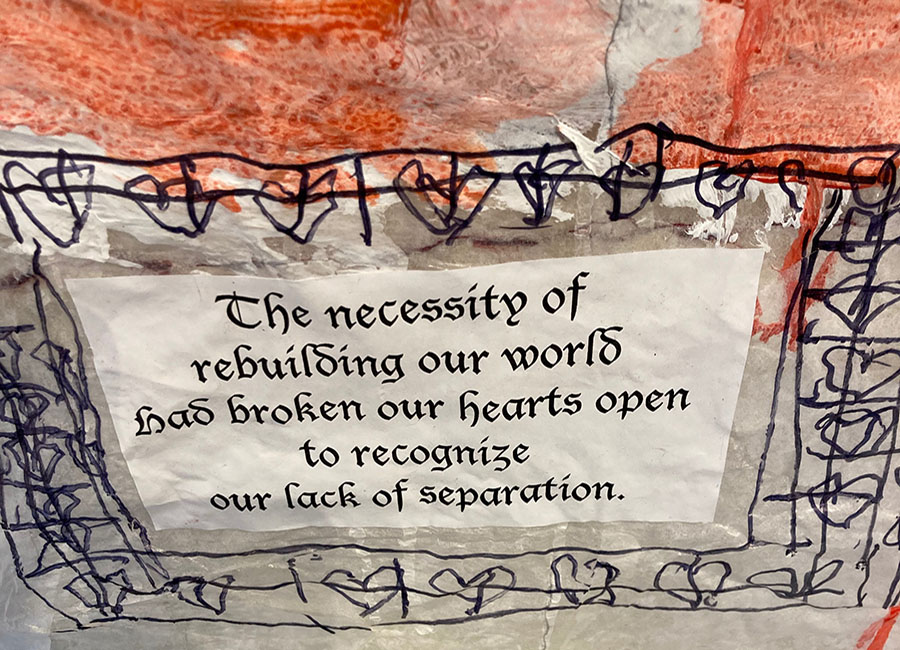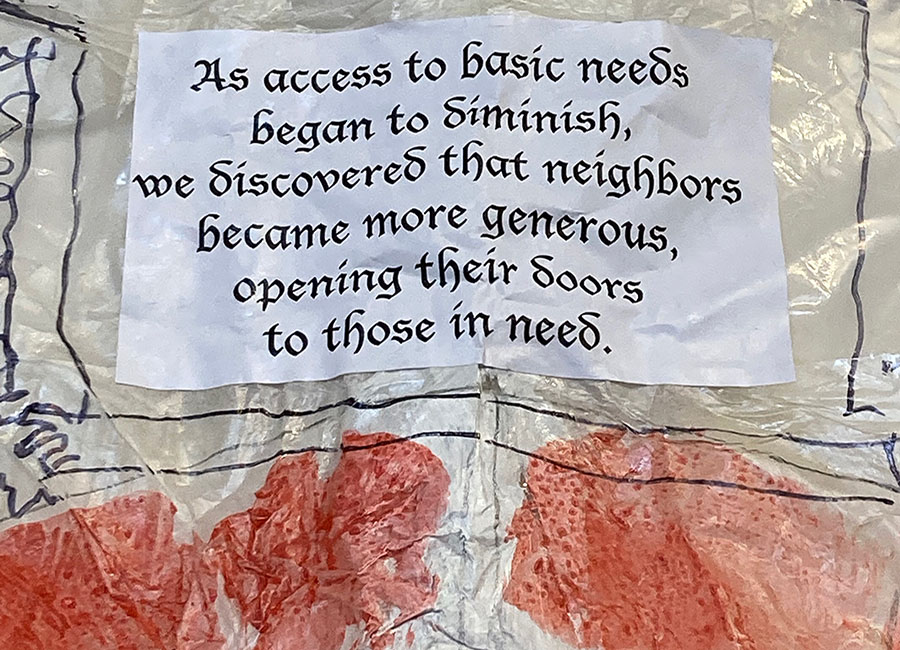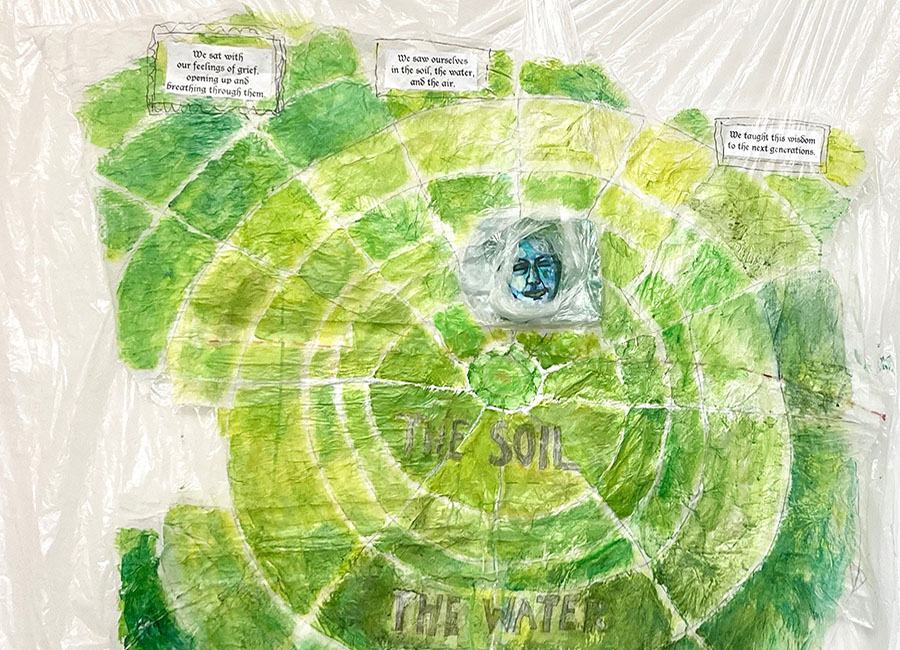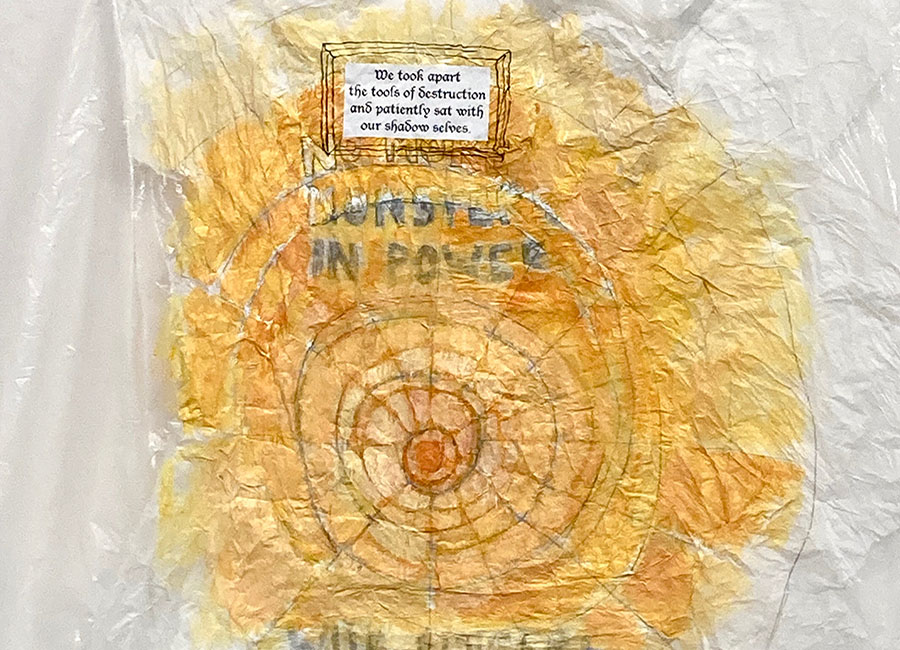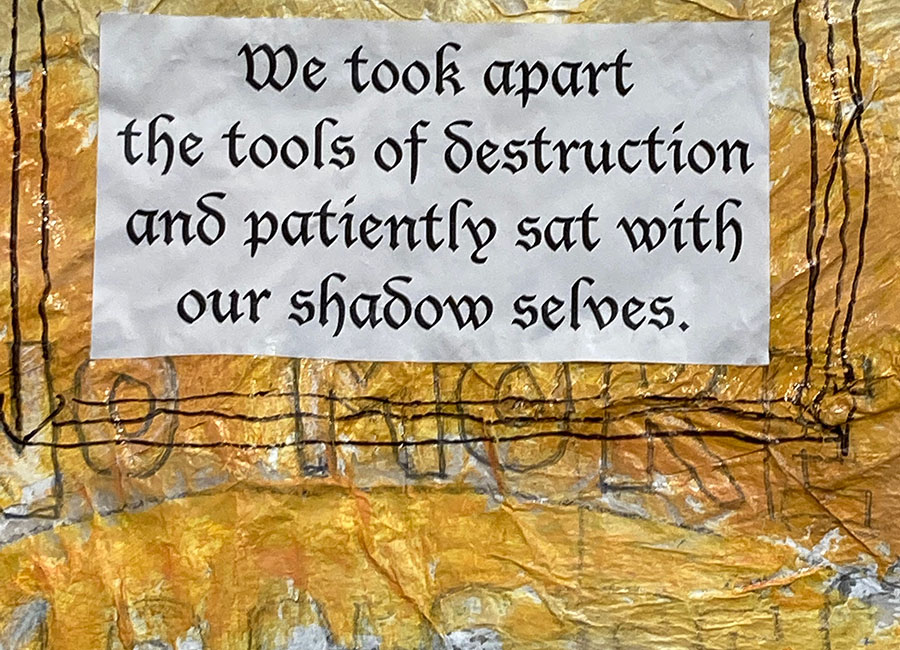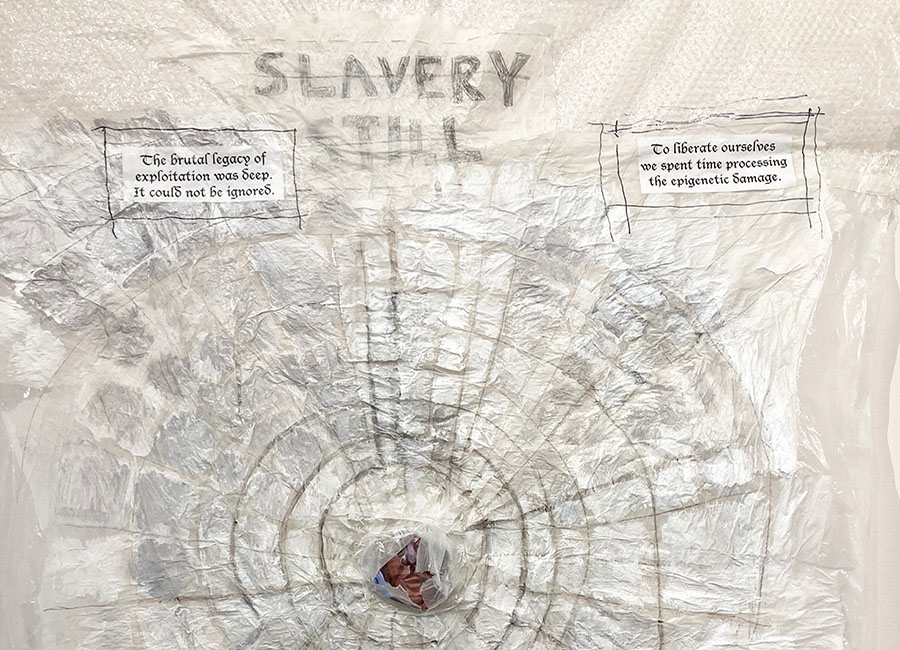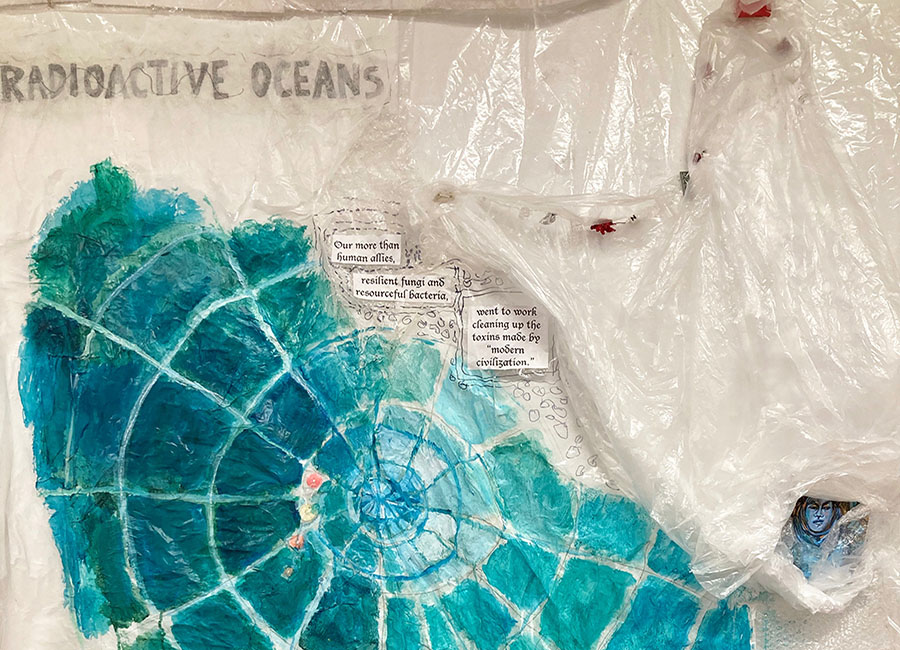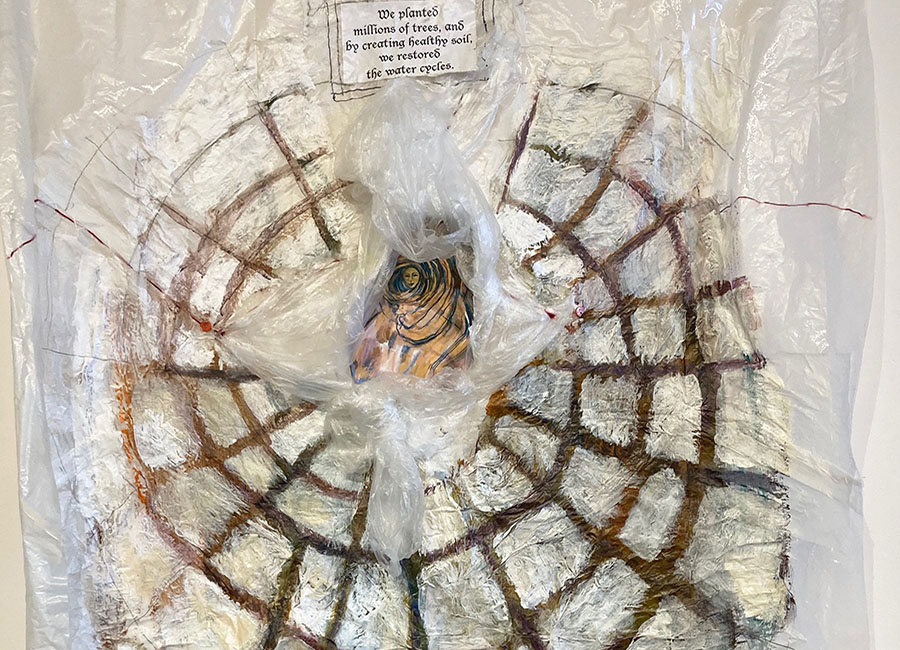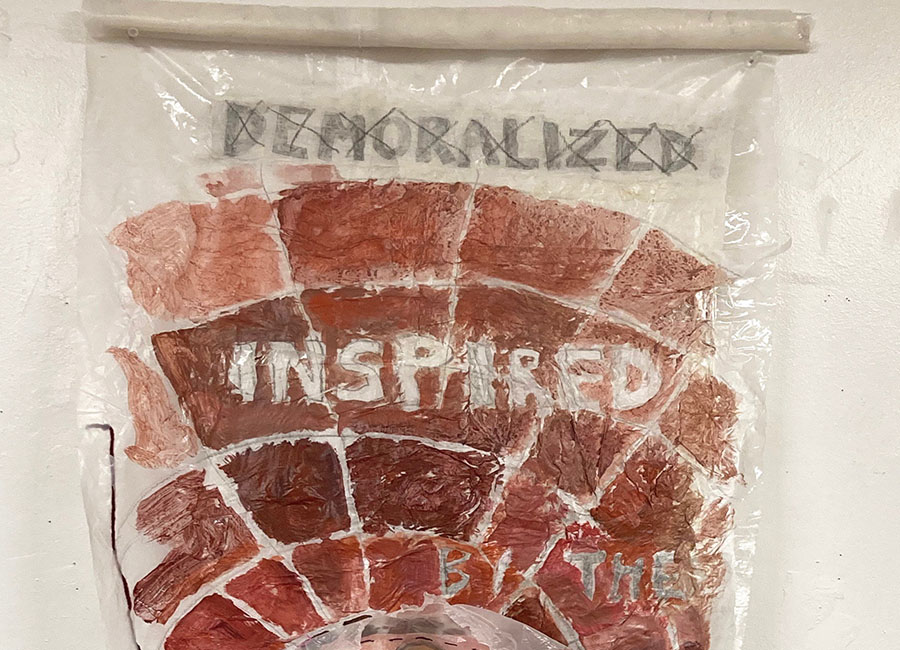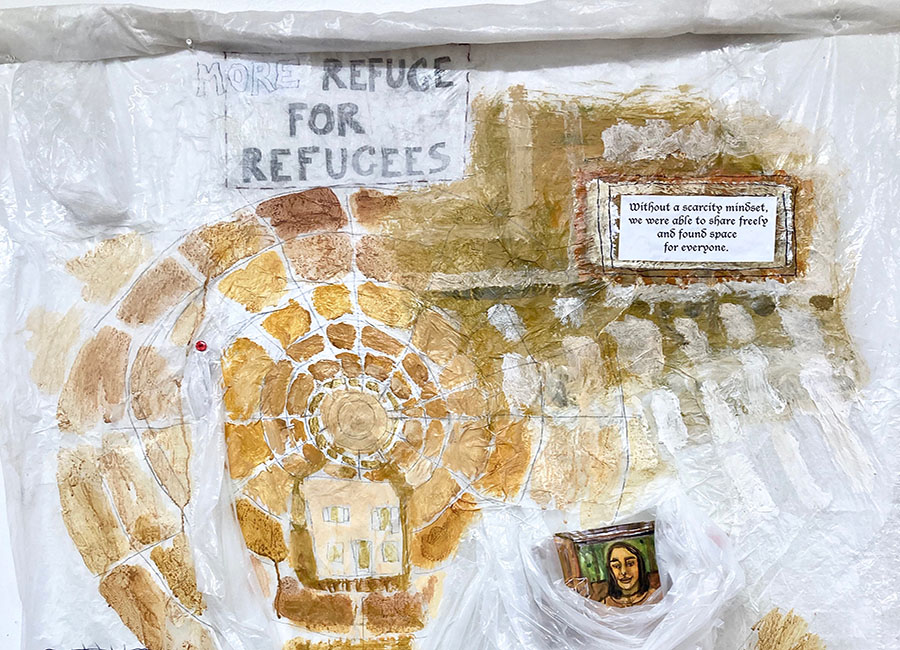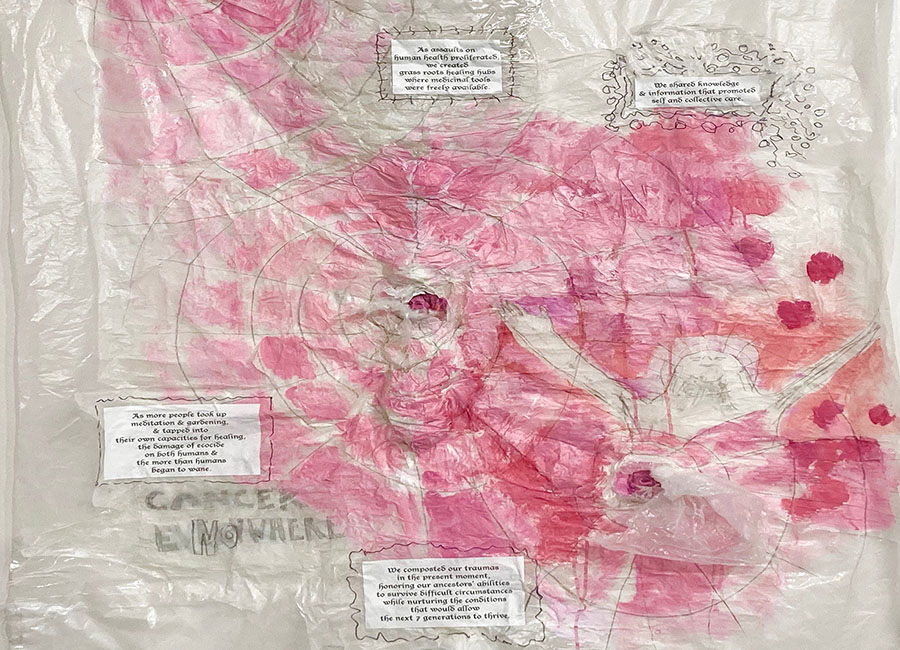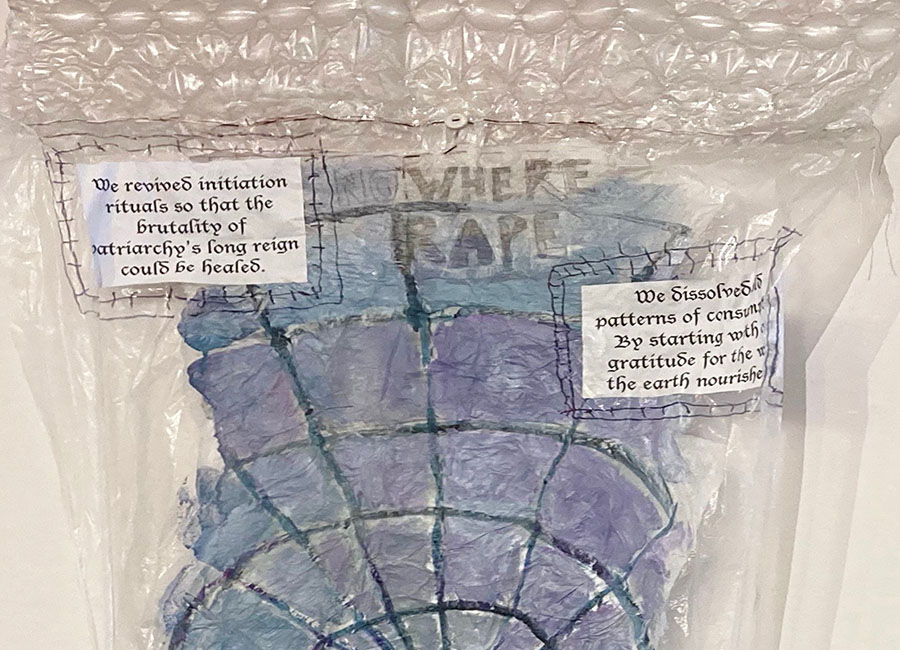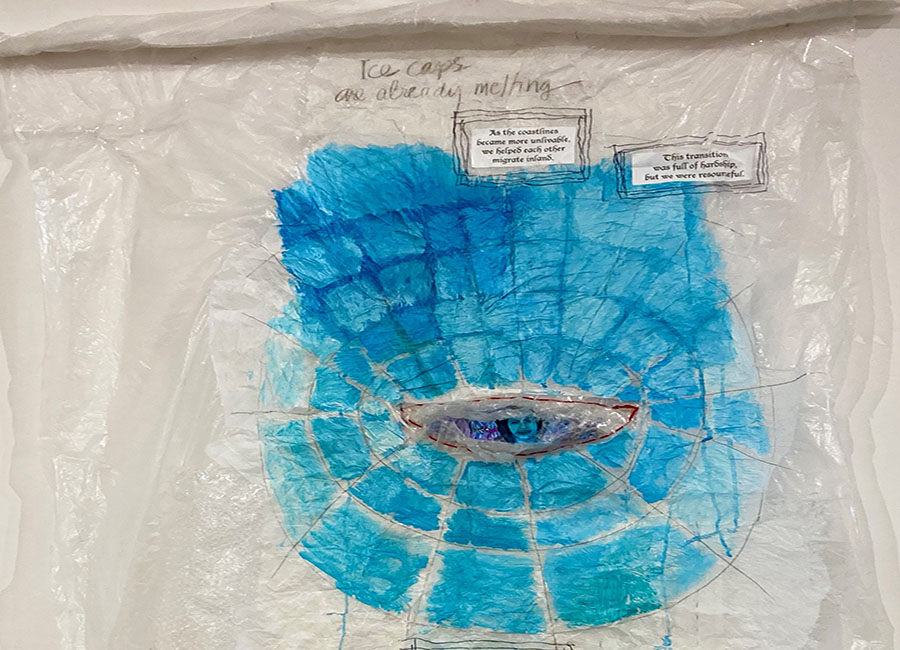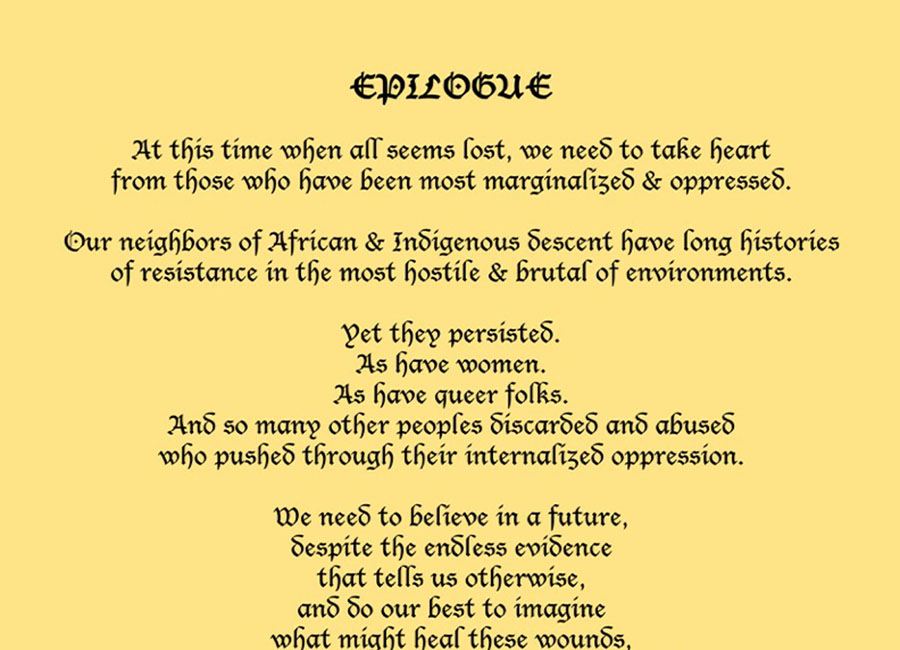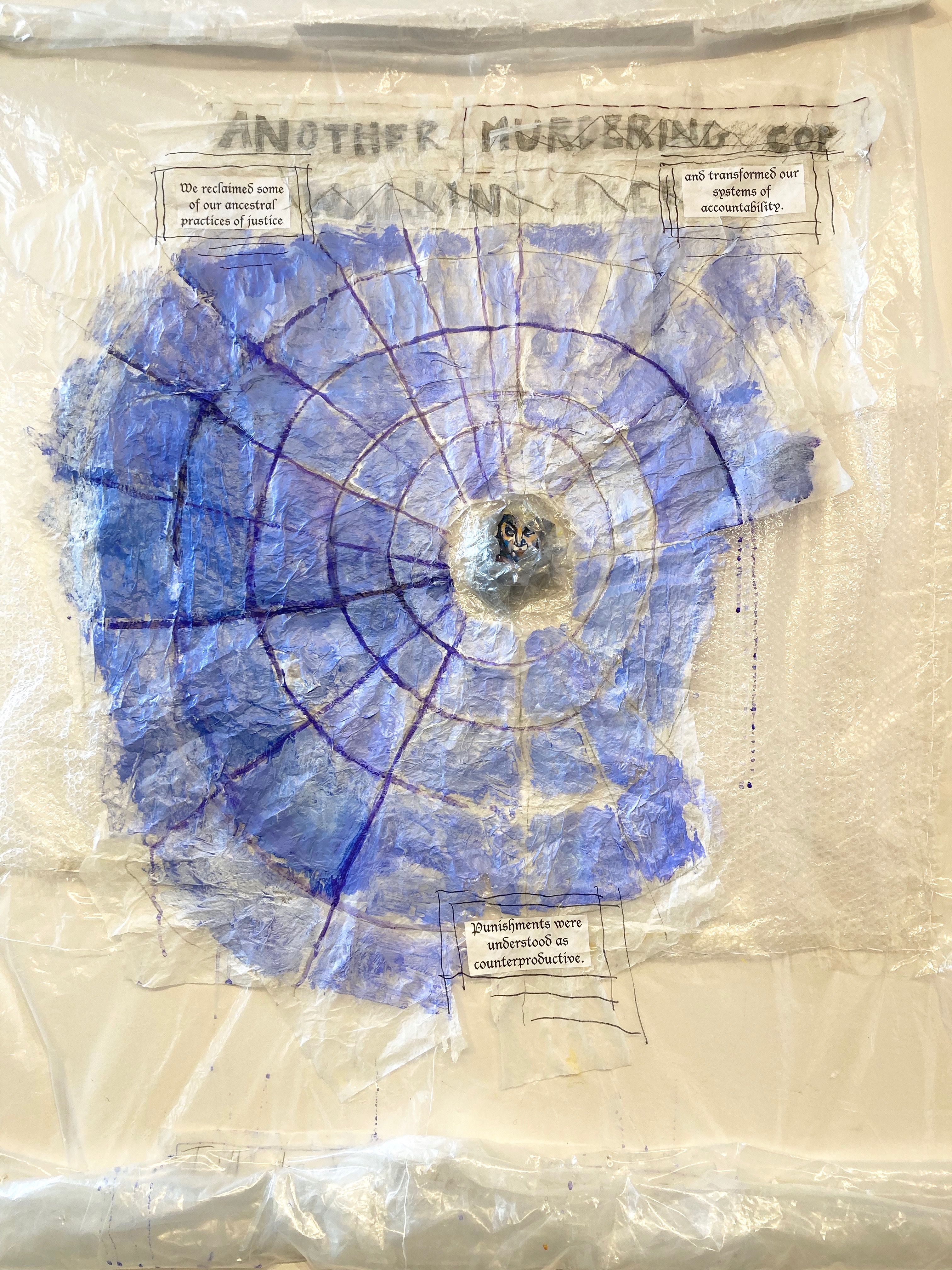Dead Ocean Scrolls
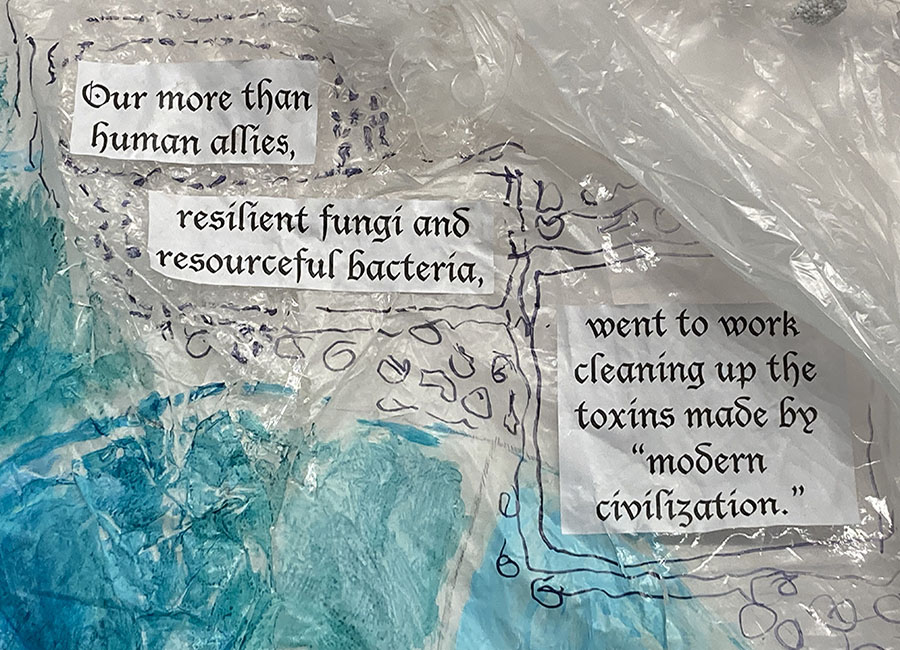
The Dead Ocean Scrolls and other Possible Futures
Beverly Naidus, TCC Gallery, November 1-December 10, 2021
“The Dead Ocean Scrolls and other Possible Futures” is a new series that speaks to the precarity of this moment on our planet and imagines strategies for responding to many of the challenges we currently face..
The large hanging “scrolls” are made from a handsewn patchwork of scrap plastic, tracing paper, thread, digital prints, and paint. Previously these scrolls were known as “trauma curtains” and were part of the installation “We Almost Didn’t Make It,” exhibited at COCA in Seattle and ONCA in Brighton, England in 2018.
During the Pandemic time, Naidus spent time reflecting on the impossibility of healing those traumas and was reminded that thinking things were impossible to solve was part of the problem. She took inspiration from lots of speculative fiction, the Emergent Strategy Institute, and recent findings by radical anthropologists and archaeologists, and began reimagining antidotes to the current dystopia. This practice required writing, meditation, working in the dirt of her garden, lots of discussions, and processing complex layers of emotions via painting and sewing.
Naidus’ imagination became fixated on dystopic futures and the temporality of humans on earth when she first read Hiroshima by John Hersey in 6th grade. She learned to process her nightmares as art works and writings all through her 20s and early 30s. Her goal then was to awaken others who might be numb, cynical, or disengaged and hopefully get them disturbed enough to become activists to change things. By her mid-30s, she had begun training with Joanna Macy and Thich Nhat Hanh, and she was exposed to the theoretical framework of reconstructive visions as laid out by social ecology. Her intentions for her work began to shift. She began explicitly inviting the stories of others into her process and facilitated workshops to help us dream into another future. It became clear to her that when a numb person heard that the house was on fire, they often would shut down, but when their vulnerability was touched by another’s dream or story, they might feel a sense of connection that was powerful enough to awaken their inner activist and dreamer.
The use of plastic as a material is laden with significance for her. Her late father was a chemical engineer who designed and manufactured plastics. He was also a lifelong gardener who sprayed the fruit trees with pesticides. It was the cutting-edge technology of that time, and the tragic impacts were not yet widely known - only Rachel Carson’s classic Silent Spring was there to warn us. As a result of her early exposure to these toxins, as well as the aerial spraying of Malathion in southern California during the nine years she lived in Los Angeles, she became disabled in her late 30s and early 40s by an environmental illness. Even though she identified as someone concerned about the environment before the illness, the experience of being profoundly touched by ecocide and meeting others similarly disabled changed her forever. She was one of the fortunate ones who recovered. Her healing process included a combination of modalities and protocols that shifted her body’s chemistry and immune system, and art making was crucial to that process. The project, CANARY NOTES: The Personal Politics of Environmental Illness that investigated the origins of pesticides and the corruption involved in marketing them, along with her Healing Deity series helped her connect to her spiritual and creative strengths and catalyzed a profound shift that lifted her out of her disability.
Although she continues to navigate the modern world of industrial chemicals with caution, this somatic experience of ecocide deeply influenced her creative voice. The ability that her body has had to heal and transform, despite what could have been a permanent limitation, has informed her imagination in a powerful way. While she is not at all certain that the worst aspects of ecocide can be avoided, she has been looking at the neuroplasticity of the brain (another fascinating use of the word plastic) and attempting to reimagine our future with a trust that often seems irrational. Since that which cannot be explained logically has informed aspects of her art for most of her life, she will continue to believe that solutions to our current problems may exist in realms currently unknown. She has tried to depict some of these questions and reflections in the “Dead Ocean Scrolls and other Possible Futures.”
As Naidus was reworking the curtains into scrolls, she found that the motif of the web spoke most vividly of the necessity to see our current problems as interconnected. A new series of digitally painted, Pandemic Healing Deities peek out of the plastic folds, bulges, and blisters, like change agents emerging to shift the energy and create transformation. A limited edition of prints of the Pandemic Healing Deities will be available for purchase.
